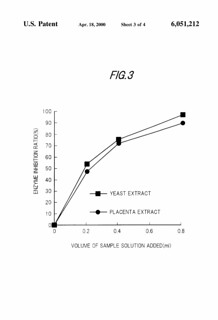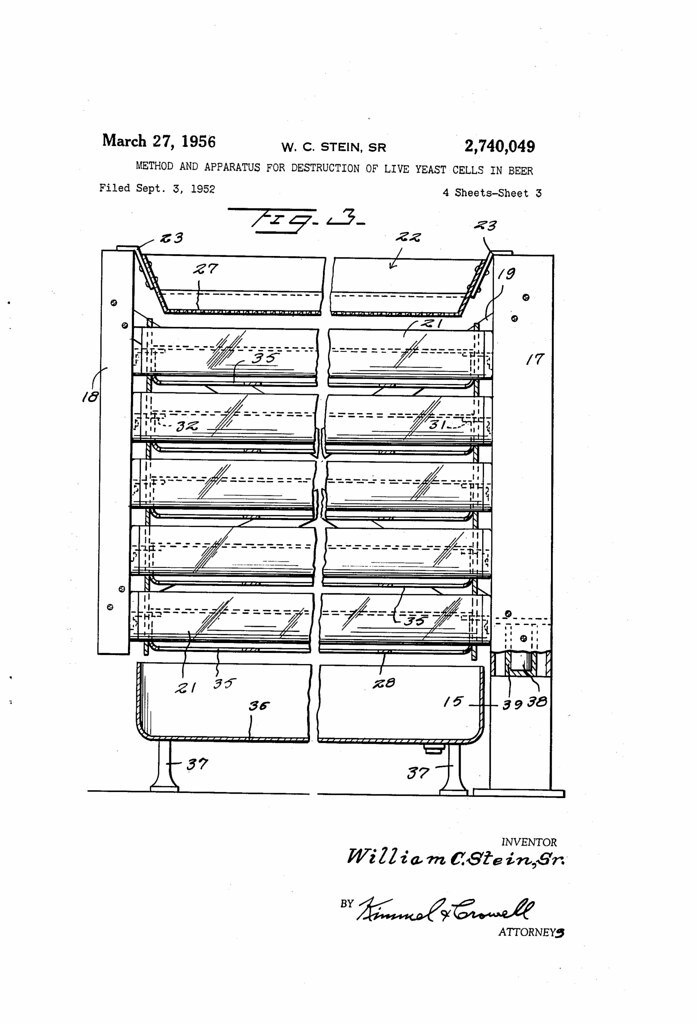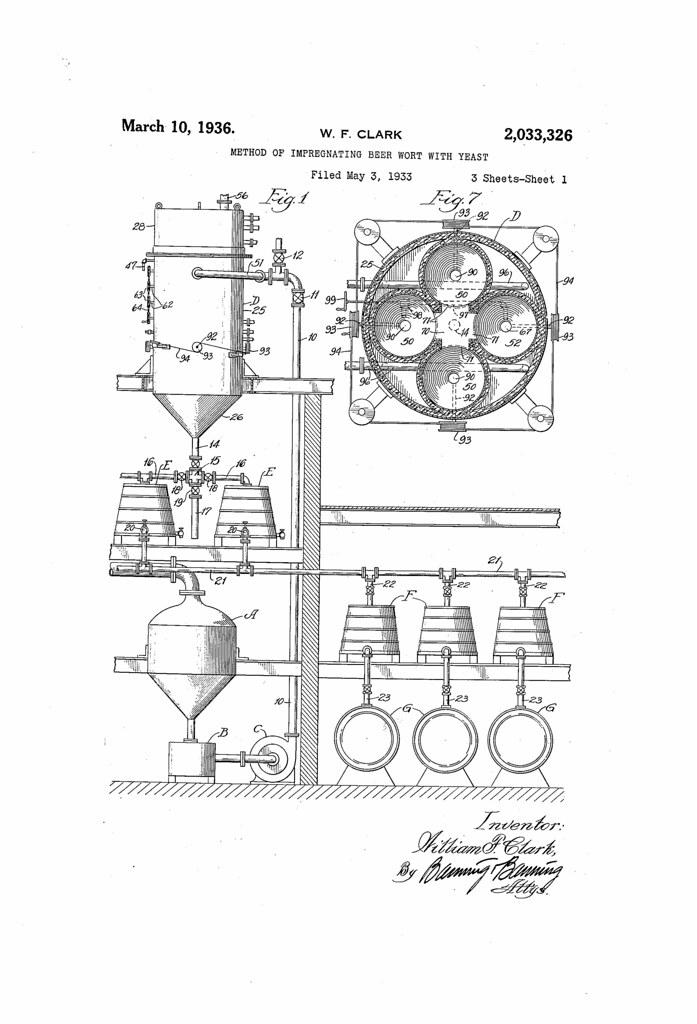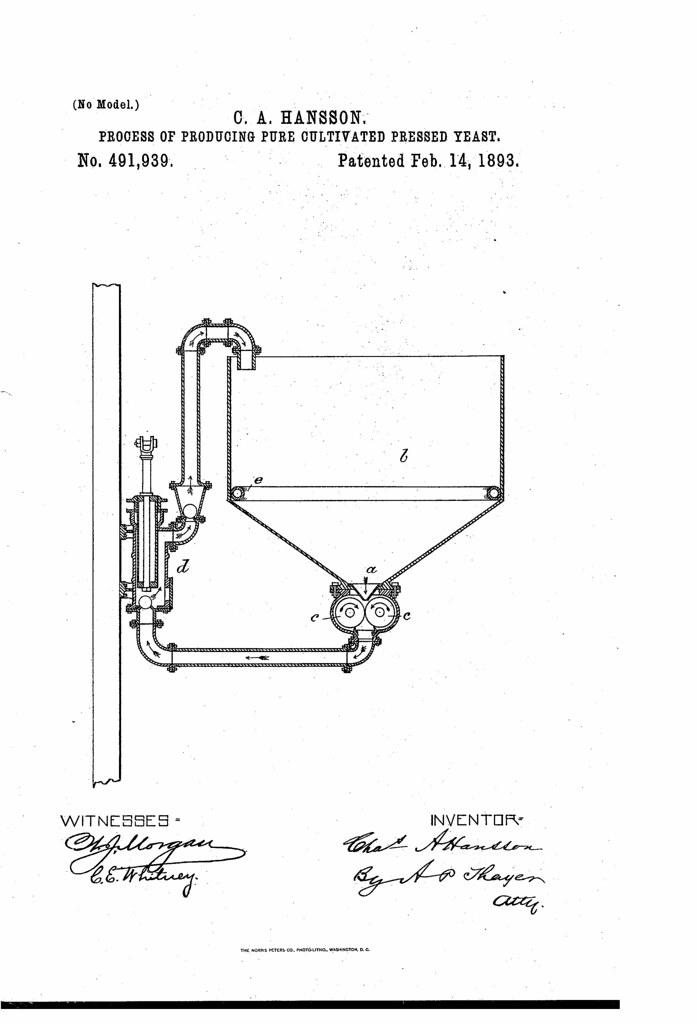
Today in 2000, US Patent 6051212 A was issued, an invention of Hisao Kado, Takumi Shibata, Fujio Kobayashi, and Masaki Kubota, assigned to Sapporo Breweries Limited, for their “Process for Producing Yeast Extract.” Here’s the Abstract:
In accordance with the present invention, it is provided a method for producing a yeast extract with the improvement in the color and odor characteristic to yeast extract and with no modification of the useful substances such as amino acid, etc. compared with conventional yeast extract.
By a simple method in accordance with the present invention, color and characteristic odor can be removed, with almost no loss of the contents of useful substances such as amino acid, etc. from the yeast extract solution produced in a conventional manner. Because the resulting yeast extract can be mixed with other materials for use, the yeast extract is applicable to various fields, for example for cosmetic products and healthy foods other than seasonings, which expectantly enlarges the applicable range of the yeast extract.





















